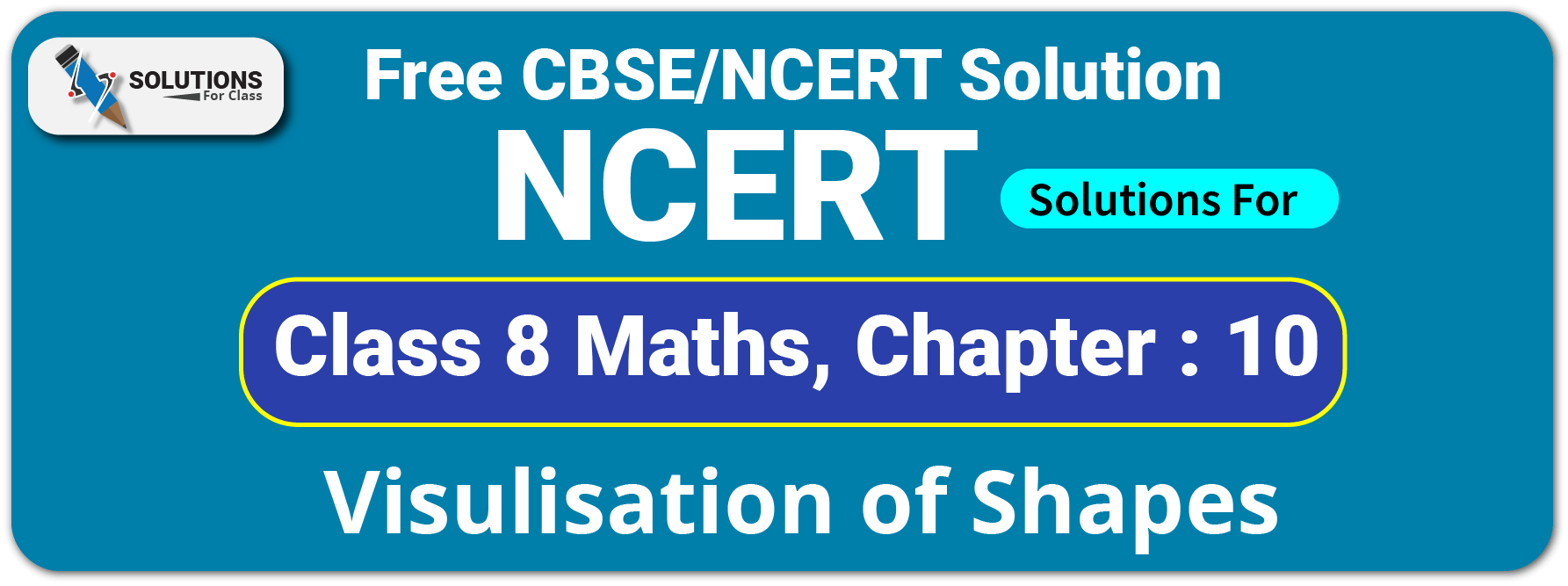
Table of Contents
ToggleThis article provides NCERT Solutions for Class 8 Maths Chapter 10 – Visualising Solid Shapes to aid students in their studies. If you’re struggling to find answers to NCERT textbook questions on this topic, you’ve come to the right place. NCERT Solutions are a vital resource for CBSE Class 8 students. Based on the latest syllabus provided by the Board, they offer detailed explanations for all questions in the NCERT textbooks. Boost your exam preparations and score well by accessing exercise-wise solutions for NCERT Class 8 Maths Chapter 10.
NCERT Solutions For Class 8 Maths, Chapter 10, Visulisation of Shapes (All Exercises)
Frequently Asked Questions on NCERT Solutions for class 8 maths Chapter 10 Visualising Solid Shapes
Why should students study NCERT Solutions for Class 8 Maths Chapter 10 from SolutionsForClass?
There are several reasons why students should study NCERT Solutions for Class 8 Maths Chapter 10 from SolutionsForClass.
Firstly, the solutions are well-structured and follow the latest CBSE syllabus, ensuring that students can rely on them for accurate information.
Secondly, the solutions are presented in an easy-to-understand language, making it easier for students to comprehend the concepts.
Thirdly, SolutionsForClass provides exercise-wise solutions, which helps students to understand the chapter in a systematic and organized manner. Finally, SolutionsForClass offers comprehensive solutions, which help students to prepare for exams and score well.
What will I learn in NCERT Solutions for class 8 maths Chapter 10 Visualising Solid Shapes?
In NCERT Solutions for Class 8 Maths Chapter 10 – Visualising Solid Shapes, you will learn:
- The definition and properties of solid shapes such as cubes, cuboids, cylinders, cones, and spheres.
- The various methods of representing 3D objects on a 2D surface, such as drawing isometric views and nets.
- How to calculate the surface area and volume of different solid shapes using appropriate formulas.
- How to solve problems related to the surface area and volume of solid shapes.
- The practical applications of solid shapes in real-life situations, such as packaging, construction, and design.

